Why stop enjoying the health-rich benefits and the pleasant freshness that come with your self-grown vegetables and herbs? If you live in a mild climate, it’s actually the perfect opportunity to plant a winter garden with your preferred choice of salad veggies, herbs, and fruits.
Though it may come with an additional task of having to protect the plants from the extreme weather elements, a winter garden is actually the easiest to maintain, considering the decrease in pests and diseases (since most pests hibernate during the cold weather). Add to that the fact that it’s the time when weeds really struggle to grow, which then gives more room for your winter plants to flourish.
Read on to establish the best vegetables to grow in winter, as well as the best winter herbs that will ensure your sound health throughout the season. Don’t forget the benefits of this seemingly overlooked practice.
5 Benefits of a Winter Garden
Winter gardening is advantageous, as it offers economic, health, and environmental benefits.
1 – Fresh always tastes best
Growing in winter is an excellent way to get fresh food. Fresh, healthy food is always better tasting and nutrient-rich, helping boost your immune system and support your overall good health.
2 – Helps you fight off winter weight gain.
Spending more time indoors can easily lead to boredom and, in turn, trigger your snacking appetite—and too much snacking is the primary culprit of unhealthy weight gain.
However, feasting on your home-grown healthy and nutritious winter vegetables and herbs is an effective way to keep your weight in check and your entire body in shape.
3 – Reduced grocery costs
You get to cut down on your grocery costs and also save yourself from the winter seasonal rate hikes on vegetable and fruit prices. Unfortunately, those higher prices have become the norm during the cold weather seasons.

4 – It’s a great way to get exercise and fresh air all winter long
Winter is undeniably the coldest season and the time when almost everyone spends much time indoors (either sleeping or even sitting around the fireplace). However, being a couch potato is a practice that, of course, poses various risks to your health. Indulging in outdoor activities that come with winter gardening is a sure way to keep your body active and hence keep those extra winter pounds in check.
5 – It’s better for the environment than trucking in food
A lot of greenhouse gases are emitted into the atmosphere in the process of food transportation—which is, of course, harmful to the environment.
Growing your own food is the best way to reduce your carbon footprint and help create a greener environment.
If you can’t grow your own garden, choose a local farmers’ market over trucked-in food. You’ll support your local economy and receive greater nutrition.
Stay in the Zone
The weather type plays a vital role in your winter gardening plans. So, be sure to know your USDA plant hardiness zone as this enables you to make the right choice concerning plants to grow in winter.
Simply check your seed packet for information on when to sow your seeds in the late fall, check it against the USDA zone map, and you’re in business!
10 Best Plants for Winter Gardening
1 – Spinach
This green leafy vegetable is extremely rich in nutrients. This makes it an ideal salad to factor in your diet.
When it comes to winter gardening, you need to get the right spinach varieties that will withstand the cold temperatures while also giving you a hearty flavor. Actually, the concentrated flavor and the dark nutrient-rich leaves are courtesy of the plant’s ability to convert starch into sugar—a strategy that spinach uses to survive the cold seasons.
Some of the winter spinach varieties worth your consideration include the Giant winter spinach, Bloomsdale long-standing spinach, and Avon hybrid spinach.
Remember, spinach does well in moist soil. Therefore, consider covering your planted winter spinach with floating row cover or garden netting to protect them from insects and frigid temperatures, as well as overheating factors.
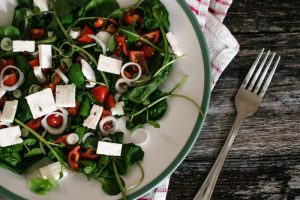
2 – Broccoli
Broccoli is a green vegetable that usually thrives well in moist, fertile, and well-drained soil (exhibiting a slightly acidic level) with sufficient organic matter. Like any other green vegetable of its family, broccoli requires full sun to reach the desired maturity level.
Consuming the veggie comes with lots of health benefits, which include protecting the body from damaging free radicals, enhancing the healing process of wounds and cuts, as well as building collagen to form body tissues and bones. This is owing to its richness in fiber, minerals, and multiple vitamins.
The secret to enjoying more of your broccoli relies heavily on getting the right broccoli variety planted at the right time.
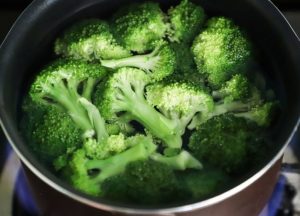
3 – Carrots
Carrots are another cool weather plant that also requires moist soil to thrive. However, utilizing container gardens and raised beds can see you grow your preferred carrot type even in the winter season. Of course, this is made possible with the added protection of a plastic tunnel that primarily plays the role of a cold frame.
You can start enjoying your carrots as early as the thinning stage by simply adding the thinned ones to your salad. Only harvest them when they’re big enough to be eaten to ensure a crunchier, sweeter, and tastier flavor.
4 – Cabbage
Just like broccoli, cabbage grows well in cool weather. However, you can still plant even during the winter season by either growing it in your vegetable garden, in a container, or in your flower bed.
It requires fertile and well-drained, somewhat loose, slightly acidic soil with even moisture content to help keep the leaves tender. An average of 6 to 8 hours of sunlight exposure will help keep the plant in shape for more health benefits.
Consider additional protective measures to help secure your cabbage from extreme frost.
When consumed in the raw or lightly steamed form, cabbage tastes more crispy, thus a great way to add flavor to your winter meals.
5 – Leeks
Leeks are allium veggies and are closely related to garlic and onions. They exhibit a milder flavor. Thus, you can comfortably use them as a salad as in soups or stews.
If you’re a leek fan, then you get the opportunity to feast even through the coldest seasons, considering that it can be harvested at any size—and the smaller the size, the subtler the flavor.
Grown in sunny spots with well-drained fertile soils, leeks are genetically born to withstand the winter months owing to their unique features like the thick stems and short leaves—which come in handy to their rescue in the cold weather. They usually go to seed and multiply in the spring.
Therefore, to ensure unlimited harvesting (even in the coldest seasons), consider mulching your leek garden to maintain the soil’s moisture and to prevent the ground from freezing.
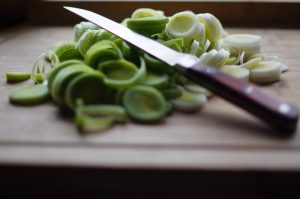
6 – Radishes
Radishes are edible root vegetables that come packed with lots of nutrients. These include vitamins, fiber, zinc, antioxidants, potassium, and many other nutrients to help ensure your body’s optimum operating level.
Consider having your winter radishes this season as they work well with stews, soups, salads, and stir-fries to give you a perfect taste. Remember, nothing goes to waste when it comes to the consumption of winter radishes. Even the shoots and leaves make great additions to salads and soups.
Grow them in a deep, fertile bed of soil (loose and free of stone) with sufficient water to help prevent your radishes from hardening. Also, place them where they can quickly get sunlight for an average of 6 hours a day.
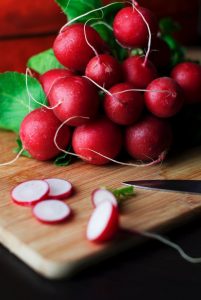
7 – Parsley
Parsley is a common herb in most dishes owing to its garnish role. You can use it to enhance the flavor of your preferred dish or even enhance the visual impact of the plate.
Though it’s grown from slow germinating seeds (a fact that be remedied by soaking the seeds in water and letting them stay overnight), parsley, to some extent, can thrive even in cold climates. In most cases, you’ll notice that the herb tends to grow much slower in extreme temperatures—the reason being that it hides underground for safety even as it continues to grow.
Parsley does well in moist and nutrient-rich soil, and you can have it either in the sun or in some dappled shade.
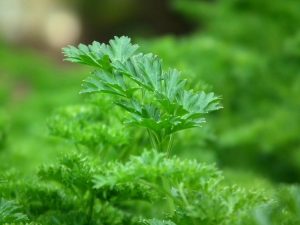
Consider planting parsley in containers and bring the herb indoor in freezing temperatures. This will enable it to survive the winter season. But first, dig it up safely (as it has very long taproot) and place it in a container that is deep enough to accommodate the roots. Then water properly and place in a shaded location. So ensure it stays outside for a few weeks before you finally transfer it inside.
Note: Ensure you place your parsley next to a window when you bring it indoors. It should still receive adequate sunlight.
8 – Rosemary
Rosemary is a perennial herb. You can plant it any time of the year to continue enjoying its lemon-pine flavor. This evergreen herb pairs well with garlic and heartier meats like roasted lamb and chicken, as well as olive oil. In addition, it offers medicinal benefits, including the treatment of migraines, memory and concentration enhancement, and treatment of digestion-related issues.
However, depending on your growing zone, this type of herb can either survive the winter or simply die out. For instance, if you reside in USDA plant hardiness zones 7 or below, you may be forced to move your rosemary plant indoors to protect it from the freezing temperatures.
Remember, while indoors, the herb requires proper drainage to help it flourish.
Generally, rosemary plants require sufficient sunlight of about 6 to 8 hours a day and, of course, proper air circulation to mature well. Therefore, consider planting it in a sunny but sheltered location to keep it off the harsh winter winds. If possible, have it at a warm spot next to your house. Ensure you have a frost blanket to give the plant much-needed extra protection during the cold snaps.
9 – Kohlrabi
This biennial vegetable makes a perfect salad. It has a taste and texture that somehow resembles that of broccoli and cabbage stems. However, it exhibits a sweeter and milder flavor as compared to the two.
You can actually consume this veggie in its raw or cooked form. Regardless of your preference, either way, you still get to benefit from its rich nutrient and mineral contents.
Kohlrabi, just like its family members, does well in cold weather, hence the sweet taste. Consider growing them in moist, well-drained, and fertile soils with daily sunlight exposure of at least 6 hours. Mulching is somewhat mandatory for this kind of vegetable to ensure the even distribution of moisture; otherwise, the plant may not produce quality bulbs as required.
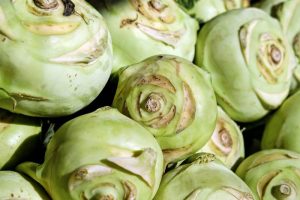
10 – Winter savory
Winter savory is an easy-to-grow herb and does well in full sun (an average of 6 hours a day) and in well-drained alkaline soil. A fertile sandy soil with excellent drainage properties can be an option. You can have the seeds planted directly into the earth; however, ensure light soil covering to enable adequate sunlight penetration for an enhanced propagation process.
Winter savory is often used as a culinary herb, considering the spicy and peppery flavor it imparts to various dishes. You can use it alongside other herbs like rosemary, thyme, or even basil for an enhanced taste.
Other than the culinary option, you can still add savory’s fresh or dry leaves to potpourri (for freshening purposes). You can also use it in your cup of tea to help ease the winter blues.
Special Care for Winter Gardens
The dropping temperatures can have severe implications on your winter garden, especially if the right protective measures aren’t put in place. Here are some of the things to do to ensure the safety of your winter herbs and veggies:
Winter watering needs
You may need to water in arid zones across Texas, Arizona, and other areas with similar weather types. This is to help the soil hold more heat and also increase the humidity level, thus enabling your plants to survive frost “burn.”
While you may need to water your garden this season, it won’t require as much water as in the summer season. Consider watering your garden in the warmest hours of the day to avoid flooding the leaves. That practice, in turn, helps to prevent the frost from building up on the foliage.
Take cover!
Your winter garden may have the need to be covered with burlap or other protective material if frost is expected. This is especially likely in zone 8a.
Most winter vegetables (like spinach and broccoli) will survive a few touches of frost. However, they will not survive the most extreme cases of cold. And so you need to have some burlap, old sheets or even towels in place. Breathable fabric is the best way to cover your rows if a frost is likely to occur.
Note: Some frosts can occur overnight. Therefore, ensure you cover your plants before or immediately after sunset. This timing means you’ll capture the ground heat and keep it close to the plants. Remove the covering by mid-morning to allow the sun to reach your plants. The sunshine will also warm the soil again.
Avoid using plastic as a covering. It can quickly transfer the cold to your plants, hence damaging the leaves the moment it gains contact with the plant itself.
Consider containers
Consider container planters so that plants can be pulled into a garage or shed in extreme cold snap. Containers are one of winter gardening’s best secrets!
Overnight or prolonged frosts are bound to occur sometimes. Therefore, having your winter plants (especially more sensitive ones like radishes) potted makes it much easier to move them to a safer place. You’ll be able to whisk them away from the extreme weather elements.
Fertilizing requirements
Fertilizers with nitrogen and potassium work best for winter gardening projects. However, you can still go for potassium-rich organic sources like compost. Simply add some banana peels together with other vegetable and fruit waste to beef up the potassium contents.
Plant a bit earlier in zone 8a
If you live in zone 8a, plan your winter garden to harvest in late December. At the latest, plan to harvest the first of January, before the hardest weeks of winter.
Late October to early November is the best time (in zone 8) to start your winter vegetable garden because the soil is still warm, but it’s unlikely that your plants will be attacked by insects and diseases. The cold weather is also ideal for the smooth transition of the seedlings into maturity.
Final Thoughts on Cultivating a Winter Garden
Weather conditions vary from one area to another. Therefore, proper planning (with your zone weather type in mind) is crucial for a fruitful winter garden.
The three essential aspects of your planning should entail:
- Planting cold-hardy vegetables, herbs, and fruit varieties.
- Ensure your winter plants are protected from extreme weather elements.
- Time factor—Always strive to plant at the right time.
Hint: If you’re a first-timer, ensure you learn the basics of how to grow a winter garden early. Prepare yourself before the peak winter garden planting time arrives.
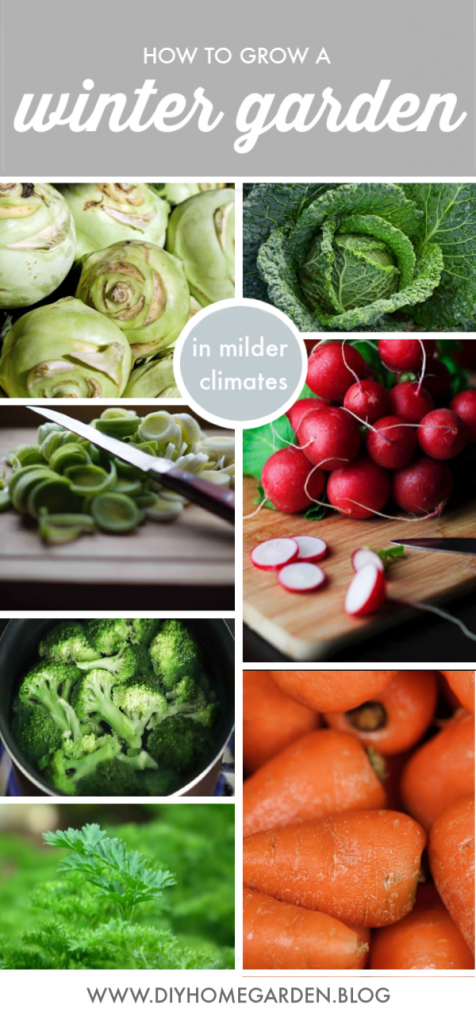


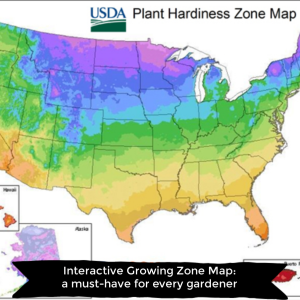

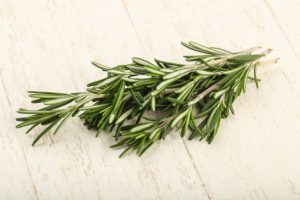

Comments are closed.